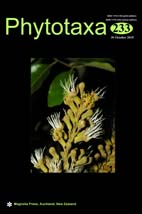Abstract
Corybas is an elusive terrestrial orchid genus mostly inhabiting the high peaks in Peninsular Malaysia, which is the most vulnerable habitat to climate change. Nine species, of which seven are endemic, were studied based on natural populations, whereas information on another two was obtained from herbarium collections. Corybas caudatus was excluded from the study due to insufficient materials, and the type was not located. The species investigated were growing in small populations in the remaining moss-covered forests in the highlands. Human activities and temperature rise are two major threats to the wild populations. Our field observations revealed that Corybas species are good indicators of climate change as they are highly sensitive to temperature rise and drop in relative humidity. Judging from the current small number of specimens recollected, the small population sizes and degraded habitats where they grow, Corybas species in Peninsular Malaysia are all threatened by extinction in the wild.

